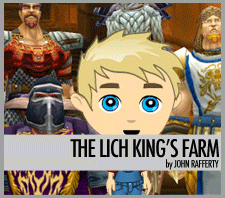Your Native Ads Are Only As Good As Your Content
Posted by Dan Buczaczer | January 15, 2013
The hype around native ads only gets louder. BuzzFeed secured another round of funding on the back of their native focus while everyone from to to Tumblr to Forbes is moving it to the center of their monetization strategy. There are those proclaiming it’s the future of digital advertising and others dismissing it as the latest fad that will disappear as quickly as it got here. So who’s right?
The reason the hype is so fast and furious is because other solutions are becoming increasingly problematic. Marketers finally seem fed up with their anemic click-through rates in banners and now have to contend with a mobile-ad landscape that is still problematic and a they reach without paying. What seemed like easy answers in digital aren’t working out exactly as planned and the industry seems hungry for a next big thing. So how did native become the on-deck belle of the ball? It’s because the idea of a marketer’s message appearing endemic to the media property in which it appears is incredibly powerful. It tends to sit in the middle of an experience, right alongside editorial content from the property itself, and uses the same voice and format. The hope is that here (finally!) is an advertising message the audience cannot easily ignore.
Is the hype justified? Yes. The great promise in digital has always been about engagement, not just exposure. Commanding a reader’s or viewer’s attention in this medium could cause them to spend a significant block of time with you, share your message with friends, opt in to hear more and possibly even purchase your product with only a few clicks. Although this industry seems to be perennially distracted, that’s the promise of online (and now mobile) that separates it from other forms of media. Communicating a brand message in a manner that actually adds to, instead of subtracts from, an experience on a site holds great promise.

But, as is often the case, there is a caveat. Critics argue that native advertising isn’t easy to execute, that the workflow won’t scale, and here they are right. But scale isn’t the only reason to pursue a tactic. Television ad production is incredibly time consuming and doesn’t scale particularly well but is used regularly because it’s been judged to be incredibly effective. And by plugging this tactic into a broader content strategy, you can greatly increase the efficiency with which it is executed . Doing native advertising well means really understanding why audiences are drawn to particular properties in the first place, then delivering something similar. But it also means really understanding what your brand is trying to accomplish with content in the first place. Media properties have hired plenty of people to help you with the former but in most cases it is up to the brand and their agencies to really nail the latter. The brands who succeed in this space will be those who already come to media partners with a well-developed sense of what they want to say and can then collaborate on how to say it. That’s because you can’t successfully pursue native advertising in any depth without a broader approach to content marketing. Otherwise, you’re just borrowing the equity of someone else and it can get confusing or even downright bizarre (Take, for example, Ragu’s sponsorship on BuzzFeed of “10 Haircuts That Were Much Cooler When We Were Kids” and explain to me how bad hairstyles relate to pasta sauce).
Like any Next Big Thing, there is plenty of noise and lots of brands doing it wrong. But hitched to a serious content strategy, the promise and potential around native advertising is strong.
Image Credit: Chris Blakeley and damian m
Leave a Comment
RSS feed for comments on this post · TrackBack URI

